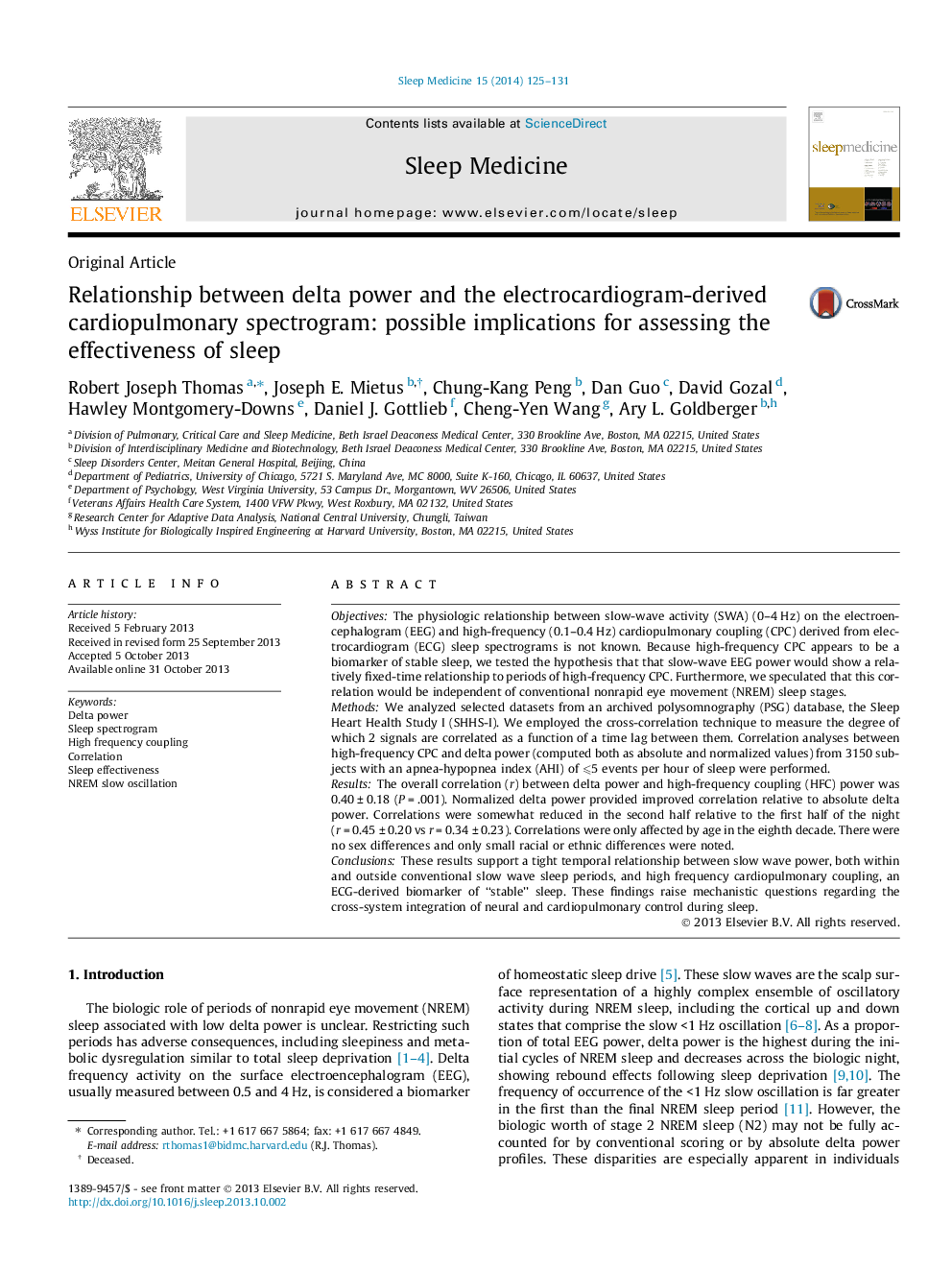| کد مقاله | کد نشریه | سال انتشار | مقاله انگلیسی | نسخه تمام متن |
|---|---|---|---|---|
| 6061326 | 1200261 | 2014 | 7 صفحه PDF | دانلود رایگان |
ObjectivesThe physiologic relationship between slow-wave activity (SWA) (0-4 Hz) on the electroencephalogram (EEG) and high-frequency (0.1-0.4 Hz) cardiopulmonary coupling (CPC) derived from electrocardiogram (ECG) sleep spectrograms is not known. Because high-frequency CPC appears to be a biomarker of stable sleep, we tested the hypothesis that that slow-wave EEG power would show a relatively fixed-time relationship to periods of high-frequency CPC. Furthermore, we speculated that this correlation would be independent of conventional nonrapid eye movement (NREM) sleep stages.MethodsWe analyzed selected datasets from an archived polysomnography (PSG) database, the Sleep Heart Health Study I (SHHS-I). We employed the cross-correlation technique to measure the degree of which 2 signals are correlated as a function of a time lag between them. Correlation analyses between high-frequency CPC and delta power (computed both as absolute and normalized values) from 3150 subjects with an apnea-hypopnea index (AHI) of ⩽5 events per hour of sleep were performed.ResultsThe overall correlation (r) between delta power and high-frequency coupling (HFC) power was 0.40 ± 0.18 (P = .001). Normalized delta power provided improved correlation relative to absolute delta power. Correlations were somewhat reduced in the second half relative to the first half of the night (r = 0.45 ± 0.20 vs r = 0.34 ± 0.23). Correlations were only affected by age in the eighth decade. There were no sex differences and only small racial or ethnic differences were noted.ConclusionsThese results support a tight temporal relationship between slow wave power, both within and outside conventional slow wave sleep periods, and high frequency cardiopulmonary coupling, an ECG-derived biomarker of “stable” sleep. These findings raise mechanistic questions regarding the cross-system integration of neural and cardiopulmonary control during sleep.
Journal: Sleep Medicine - Volume 15, Issue 1, January 2014, Pages 125-131
